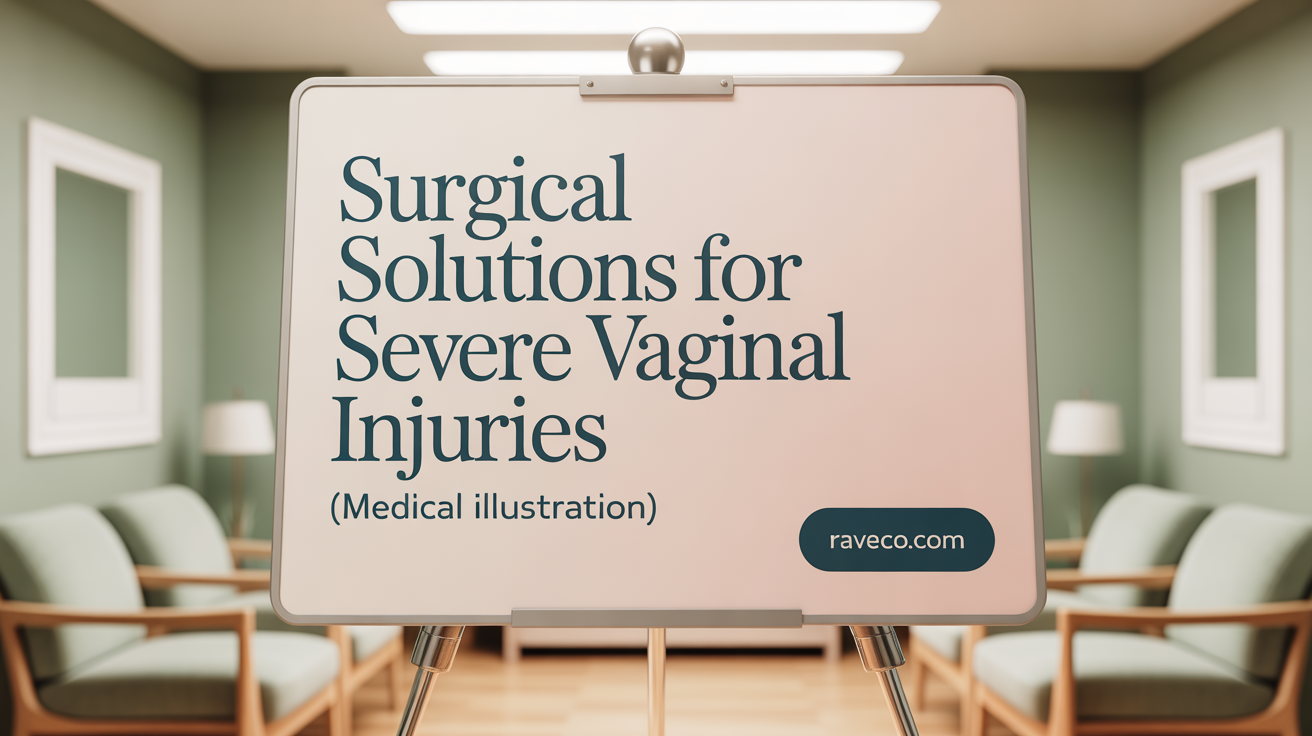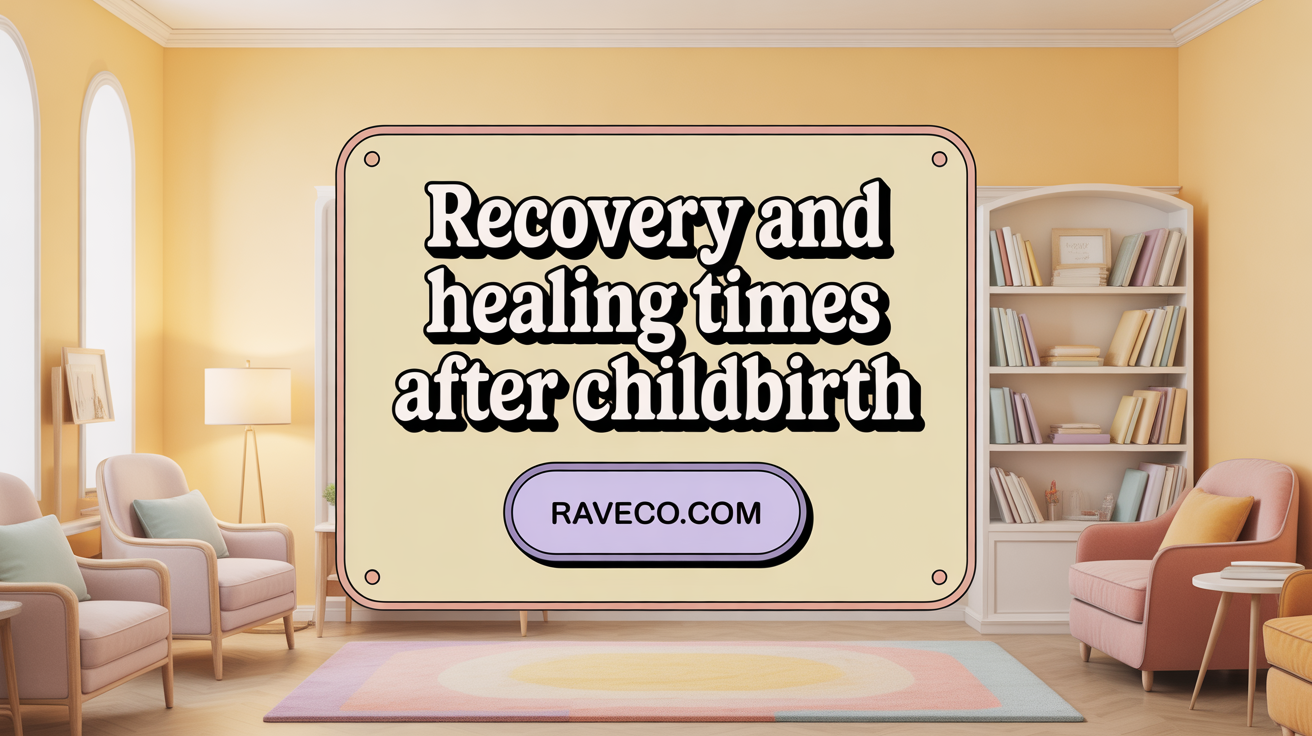Recognizing the Right Time to Address Female Infertility: Key Indicators and Expert Care in Queens

Understanding Vaginal Injuries Post-Delivery
Childbirth is a profound experience that can sometimes result in vaginal tears or injuries due to the physical demands of vaginal delivery. Recognizing the types of tears, understanding treatment options, and managing recovery effectively are vital for maternal well-being. This article explores the classification of vaginal tears, treatment modalities available, recovery processes, surgical interventions, and strategies to prevent and manage pelvic floor trauma after childbirth.
Types and Severity of Vaginal Tears After Childbirth

What are the types of vaginal tears and injuries that can occur after childbirth?
Vaginal tears are common injuries during childbirth, varying greatly in severity and extent. These tears are classified into four main categories based on how deep and extensive the damage is.
Classification of vaginal tears
The four grades of tears reflect the severity and the tissues affected:
| Type of Tear | What it Involves | Typical Treatment | Healing Duration | Additional Notes |
|---|---|---|---|---|
| First-degree | Only the skin of the vaginal opening | Usually no stitches needed, simple repair | A few weeks, often healing spontaneously | Most common, minimal impact |
| Second-degree | Skin and underlying muscle of perineum | Stitches are typically required | About 3 to 4 weeks | Most frequent grade of severe tears |
| Third-degree | Extends into the muscles around the anus (anal sphincter) | Surgical repair often necessary | Approximately 4 to 6 weeks or longer | Greater risk for complications like incontinence |
| Fourth-degree | Involves vaginal tissue, muscles, anal sphincter, and rectal mucosa | Complex surgery needed | Can take 4 to 6 weeks or more | The most severe and rarest type |
How common are these tears?
It is estimated that up to 90% of women experiencing first vaginal delivery may experience some degree of vaginal tearing or an episiotomy. Third- and fourth-degree tears are less common but pose significant health concerns.
What complications are associated with severe tears?
Severe tears, especially third- and fourth-degree injuries, can lead to long-term issues such as fecal or urinary incontinence, infections, and anal sphincter dysfunction. Proper diagnosis, timely treatment, and follow-up care are essential to minimize these risks and support full recovery.
Treatment Approaches for Repairing Vaginal Damage Post-Delivery

What treatment options are available for repairing vaginal damage post-delivery?
The treatment for vaginal tears after childbirth varies depending on how severe the injury is. Minor tears affecting only the skin (first-degree) usually heal well without the need for stitches, or with dissolvable stitches that disappear naturally within a few weeks.
For more significant tears involving both skin and muscle (second-degree), stitches are typically required. These stitches are also dissolvable and tend to heal within about 3 to 4 weeks.
The most serious tears, third- and fourth-degree, extend into the muscle surrounding the anus and into the rectal mucosa. These often require surgical repair performed in an operating room, with specialized suturing techniques. Recovery for these injuries can be longer—about 4 to 6 weeks or more—and may include complications like infection or incontinence.
Proper wound care is essential for promoting healing and avoiding complications. This includes maintaining good personal hygiene, applying cold packs to reduce swelling, using sitz baths for soothing the area, and managing pain with appropriate medications like paracetamol.
Most tears heal effectively with these treatments, and additional measures such as pelvic floor exercises can help restore strength and function to the area. Avoiding activities like sex until fully healed is recommended to prevent reopening wounds or causing additional injury.
Surgical Interventions and Repair Techniques for Severe Vaginal Trauma

What procedures and surgical interventions are used for repairing vaginal trauma?
The approach to repairing vaginal tears depends heavily on their severity. For minor injuries, such as first-degree tears, simple suturing of the skin may suffice, often healing naturally within a few weeks without the need for stitches. When tears involve both skin and underlying muscle, as in second-degree tears, healthcare providers usually perform suturing under local anesthesia to close the wound effectively.
More complex injuries, like third- and fourth-degree tears, involve tearing into the muscles surrounding the anus and, in the most severe cases, into the lining of the rectum. These injuries require meticulous surgical repair in an operating room setting. The primary goal is to restore integrity to the anal sphincter muscles and surrounding tissues to prevent long-term complications such as fecal or urinary incontinence.
How are third- and fourth-degree tears repaired in the operating room?
Surgical repair of third- and fourth-degree tears involves several specialized techniques. Surgeons identify and suturize the torn anal sphincter muscles, often using overlapping or end-to-end suturing methods to reinforce the muscles. The rectal mucosa is then carefully reconstructed to restore the continuity of the rectal lining.
These procedures typically involve the use of dissolvable stitches, which break down naturally over time, reducing the need for removal. To ensure proper healing and minimize infection risks, wound care, antibiotics, and sometimes temporary diversion procedures like colostomy may be performed, particularly in complex cases.
Are there special repair methods used for anal sphincter injuries?
Yes, specialized techniques are employed to repair the anal sphincter muscles effectively. For instance, the overlapping repair method, where one end of the muscle is overlapped over the other, provides added strength compared to simple end-to-end suturing. This approach reduces the risk of postoperative sphincter weakness.
In some cases, surgeons may use layered suturing, ensuring adequate approximation of all torn fibers. Precise identification of the sphincter ends is crucial, often assisted by digital rectal examination during surgery. These methods aim to restore sphincter functionality, decreasing the chance of long-term fecal incontinence.
What additional interventions are implemented to prevent complications?
Beyond the primary repair, additional measures are crucial to prevent complications. These include administering antibiotics to prevent infection, thoroughly inspecting the wound for any missed injuries, and providing proper wound care to promote healing. In certain instances, temporary colostomy may be necessary to divert stool and allow the repair to heal without being subjected to strain.
Postoperative care also involves pain management, sitz baths, and maintaining good hygiene. Close follow-up is essential to monitor healing, detect signs of infection or repair separation, and address any functional issues early. Effective surgical intervention combined with vigilant postoperative care significantly improves recovery outcomes in severe vaginal trauma cases.
Healing Timelines and Recovery After Vaginal Tears

How long does it take for vaginal tears to heal after childbirth?
Healing from vaginal tears depends heavily on their severity. Most minor tears, classified as first- and second-degree, tend to heal fairly quickly, often within two to three weeks. During this period, many women notice a significant reduction in discomfort and pain.
Larger tears, especially third- and fourth-degree types, involving muscles around the anus and even the rectal lining, generally take longer to heal—up to six to eight weeks or more. These more severe injuries often require additional medical care, including surgery, and a longer recovery period.
The stitches used to repair vaginal tears are usually dissolvable, with most dissolving within three to six weeks. It’s essential to maintain good hygiene and monitor the wound for any signs of infection or complications.
Full recovery isn’t just about tissue healing; it also involves managing pain, avoiding activities that could disrupt the repair, and possibly engaging in pelvic floor exercises to strengthen the muscles.
If concerns arise—such as persistent pain, foul-smelling discharge, or signs of infection—prompt consultation with a healthcare provider is advised. They can assess whether healing is progressing normally or if further treatment is necessary.
In summary, most tears heal within a few weeks, but the timeline can vary based on injury severity. Proper care and regular checkups are crucial to ensure optimal recovery and prevent long-term issues.
Managing Vaginal Stitches and Postpartum Healing Strategies

What are effective management and healing strategies for vaginal stitches and tears?
Postpartum recovery from vaginal tears or stitches involves several practical steps to promote healing and reduce discomfort. First, maintaining good hygiene is essential. Gently cleaning the perineal area with warm water during diaper changes or baths helps prevent infection. It’s best to avoid soaps, scented products, or vigorous wiping that can irritate the area.
Applying cold packs or ice packs on the affected area for about 10 to 20 minutes can significantly reduce swelling and numb the area, easing pain. Sitz baths—where sitting in warm water—are another effective comfort measure, promoting circulation and keeping the wound clean.
Painkillers such as paracetamol or ibuprofen can help manage ongoing pain. These medications, combined with stool softeners, make bowel movements easier and less stressful on the stitches, decreasing the risk of reopening the wound.
Avoiding sexual activity until healing is complete—usually within 4 to 6 weeks—is crucial. Reopening the stitches can cause pain and increase the risk of infection.
Regular postpartum check-ups allow healthcare providers to monitor healing progress. They can detect early signs of infection, including redness, swelling, foul odor, or unusual discharge.
Consistent wound care, such as gentle cleaning, keeping the area dry, and practicing pelvic floor exercises, supports tissue healing. These exercises also strengthen pelvic muscles, which can aid in overall recovery.
Incorporating these strategies can reduce the risk of complications and help new mothers enjoy a smoother recovery period after childbirth.
Recognizing Complications: When Vaginal Stitches May Have Failed
What signs indicate that stitches after childbirth may have come apart or ripped?
Even after childbirth, it is crucial to monitor the healing area carefully. Signs that stitches may have come apart or ripped include a sudden or increasing pain at the site, which may worsen over time. You might notice bleeding or bleeding that soaks through pads rapidly, indicating that the repair may be compromised.
Swelling, redness, or warmth around the stitches can be signs of infection or stitch rupture. An unpleasant smell, pus, or a discharge that looks abnormal should raise concern. Some women report feeling a sensation of tearing, opening, or tearing at the area, along with tenderness or discomfort that does not improve.
In addition to local signs, systemic symptoms such as fever, chills, or feeling generally unwell may indicate an infection that needs urgent treatment. Recognizing these signs early is vital to prevent further complications.
Signs of infection
Infection can develop if bacteria enter through the wound. Typical signs include redness, swelling, warmth, pain, and pus. Sometimes, the area may feel hot or appear shiny. An increased pain intensity or an unusual or foul smell from the area also suggests infection.
Urgent indicators requiring medical advice
Immediate medical attention should be sought if you experience symptoms like severe pain, heavy bleeding, loss of bowel or bladder control, fever, or pus discharge. These are signs that your wound may have failed or become infected and need prompt care.
Importance of monitoring during recovery
Continuous observation during the healing process is essential. Keeping the area clean, avoiding activities that put stress on the stitches, and using recommended pain relief and hygiene measures can foster proper healing. Regular postpartum checkups allow healthcare providers to assess the repair site and intervene if there are any signs of complications.
Monitoring your recovery carefully and seeking early medical intervention when problems arise can significantly reduce the risk of long-term issues like infections, wound separation, or incontinence.
Supportive Remedies and Therapies to Enhance Healing
Are there recommended ointments or remedies to promote healing of vaginal stitches after delivery?
While there are no specific ointments that are universally prescribed to promote healing of vaginal stitches, certain topical remedies may provide relief and support healing. For example, antibiotic ointments or witch hazel pads are sometimes used to soothe the area or help prevent infection, but it is important to use these only under the guidance of a healthcare provider.
Maintaining good hygiene is essential. Gently rinsing the area with warm water after bathroom visits and keeping the area dry can help prevent infection and promote comfort during recovery.
Besides topical care, applying cold packs or ice wrapped in a towel can reduce swelling and alleviate pain. Warm sitz baths are also beneficial, as they can relax the area and promote blood flow, aiding in healing.
Pain management is an important aspect of postpartum care. Over-the-counter medications like paracetamol or ibuprofen can be used to control discomfort, following your doctor’s advice.
Monitoring the area for signs of infection, such as redness, swelling, or unusual discharge, and reporting any concerns to your healthcare provider is crucial for proper healing. Always adhere to medical recommendations for post-delivery care.
What are the benefits of cold gel pad therapy?
Cold gel pad therapy offers several advantages for postpartum recovery. It helps reduce swelling and inflammation in the perineal area after tearing or episiotomy. By numbing the area, it also alleviates pain, making it more comfortable for new mothers.
Using cold packs in the initial hours or days after delivery can prevent excessive swelling and promote faster healing. This simple and effective method is easily accessible and can be used safely multiple times, as advised.
How can far-infrared and radiofrequency therapies aid recovery?
Far-infrared radiation therapy and capacitive-resistive radiofrequency therapy are advanced treatments that can support tissue repair and reduce inflammation. These therapies stimulate blood circulation and promote collagen production, which helps in tissue regeneration.
For women recovering from severe tears or episiotomy, such treatments may speed up healing and reduce discomfort. They are typically administered by trained physiotherapists or medical professionals, ensuring safe and effective use.
What are the benefits of pelvic floor muscle training?
Pelvic floor exercises, often called Kegel exercises, play a vital role in recovery after childbirth. They strengthen the muscles supporting the pelvic organs and can reduce issues like incontinence and pelvic organ prolapse.
Performing targeted exercises early in the postpartum period can improve muscle tone and function, decreasing the risk of long-term pelvic floor problems.
In summary, combining physical therapies like cold packs and pelvic floor exercises with proper hygiene and medical guidance can significantly enhance healing after vaginal tears or episiotomy, helping new mothers regain comfort and confidence.
Preventing and Managing Maternal Pelvic Floor Trauma
Risk factors for pelvic floor trauma
Various factors can increase the risk of pelvic floor injuries during childbirth. These include a large baby (macrosomia), prolonged second stage of labor, forceps or vacuum-assisted delivery, maternal obesity, advanced age, and extensive tearing during delivery. Recognizing these risk factors can help healthcare providers implement appropriate prevention strategies.
Preventive measures during pregnancy and labor
Preventing trauma starts before and during labor with several techniques. Perineal massage from 35 weeks of pregnancy can increase tissue elasticity, reducing tearing risk. Maintaining good hydration and avoiding aggressive pushing may also help. During delivery, perineal support, warm compresses, and controlled pushing techniques can minimize injury. Preparing the perineum through exercises and education can empower women to manage the process better.
Postpartum pelvic floor rehabilitation
After childbirth, engaging in pelvic floor exercises (like Kegel exercises) strengthens the pelvic muscles, improving continence and reducing prolapse risks. Early postpartum physiotherapy can tailor exercises to individual needs, aiding recovery. Use of support devices such as pessaries might be recommended for prolapse or incontinence. These approaches help restore function and prevent long-term complications.
Conservative and surgical treatment options
Minor tears (first and second degree) often heal with conservative management—keeping the area clean, pain relief, sitz baths, and pelvic exercises. Larger or more severe injuries (third and fourth degree) require surgical repair, usually involving suturing of damaged muscles and tissues. Post-surgical care includes infection prevention, pain management, and gradual rehabilitation.
Importance of education on birth injuries
Educating women about the risks, signs, and treatment options of birth injuries is vital. Knowledge enables early detection, prompt seeking of medical help, and informed decision-making. Understanding potential complications promotes adherence to preventive practices and fosters better communication with healthcare providers.
| Topic | Details | Additional Notes |
|---|---|---|
| Risk Factors | Big baby, assistance, obesity, age | Guide personalized care plans |
| Prevention | Perineal massage, warm compresses, controlled pushing | Reduce injury likelihood |
| Postpartum Care | Pelvic exercises, physiotherapy, pessaries | Improve long-term health |
| Treatment | Conservative for minor tears, surgery for severe | Follow-up monitoring |
| Education | Recognize symptoms, informed decision-making | Enhances outcomes |
A comprehensive approach combining preventive strategies, timely treatment, and education significantly lowers the risk and impact of maternal pelvic floor trauma, supporting healthier recovery and long-term well-being.
The Path to Recovery and Empowerment
While vaginal tears and pelvic floor trauma are common aspects of vaginal childbirth, understanding the types of tears, treatment approaches, and recovery strategies plays a critical role in improving maternal health outcomes. Timely and appropriate repair techniques, diligent postnatal care, and pelvic floor rehabilitation facilitate healing and functional restoration. Equally important is educating women about birth-related injuries and their management to encourage proactive care and advocacy. With comprehensive support and awareness, many women can experience successful recovery and maintain vaginal and pelvic health after childbirth.
References
- Vaginal tears in childbirth - Mayo Clinic
- Episiotomy and perineal tears - NHS
- Vaginal Tears During Childbirth: Causes & Degrees - Cleveland Clinic
- Obstetric Lacerations: Prevention and Repair - AAFP
- Maternal Pelvic Floor Trauma
- Care for perineal tears in vaginal delivery: An update for midwife
- Birth injury (to the mother) | Pregnancy Birth and Baby
- Episiotomy and perineal tears - NHS
- Treating Vaginal Tears After Birth - Cleveland Clinic Health Essentials





.png)